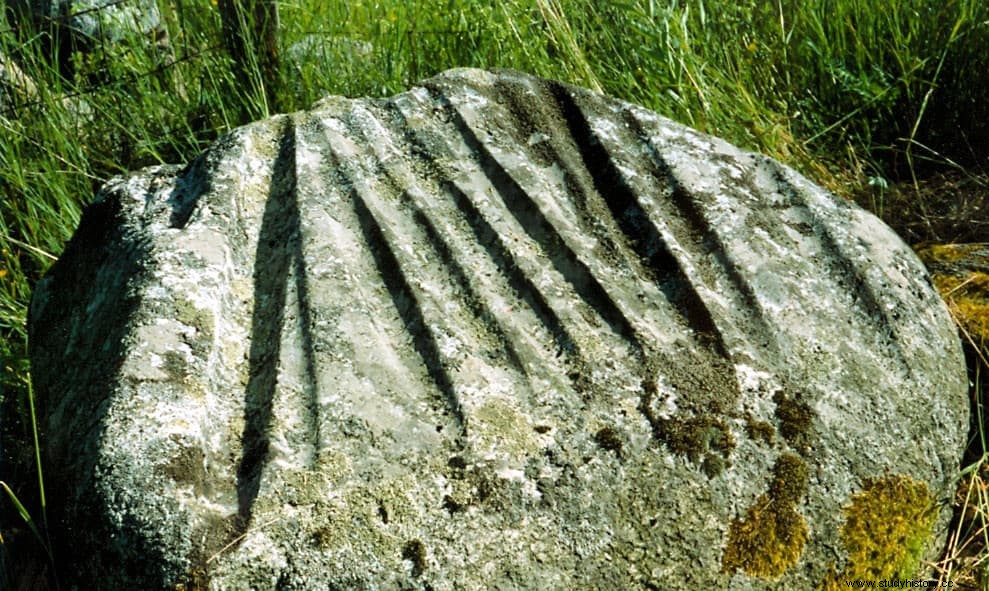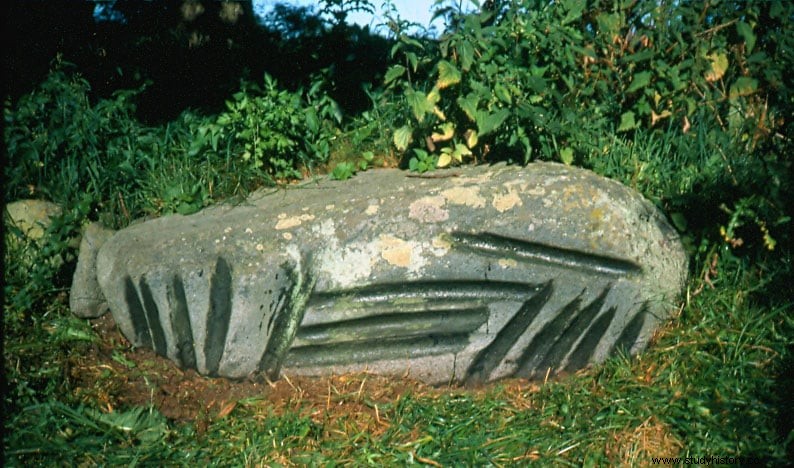The Swedish island of Gotland is home to the largest concentration of fluted stones in all of Europe, artifacts that are more interesting than they seem.
Gotland is the largest island in the Baltic Sea, located off the eastern coast of Sweden and the northern coast of Poland. It is a limestone plateau, without mountains, inhabited since ancient times and famous for its abundance of sheep (nowadays best known for being the filming location of the television series Pippi Längstrump ).
In these limestone outcrops, and in the rocks and stones scattered throughout the island, there are striations (which in Swedish are called sliprännor ) made by human hands.

Up to 3,600 striae have been located and documented, of which some 700 are found in the limestone walls, while the rest are distributed in some 800 rocks and stones of different sizes and characteristics.
The striae began to be studied in the 1850s, comparing them with other similar ones existing in France, where they are called polissoirs and date from the Neolithic era, created by the same culture that erected the menhirs and dolmens. But also in some places in Finland, Luxembourg, England, mainland Sweden, and even Australia and India. The difference is that Gotland has the highest concentration of stretch marks in the world, with the entire island practically covered in them.
By 1933, more than 500 sites with the presence of these striae on the island had already been inventoried. At first it was thought that they may have been made to sharpen Neolithic axes or swords during the Middle Ages. But it soon became clear that the width of the medieval or Viking swords was greater than the grooves themselves to fit into them. And as for Neolithic weapons, none have been found in the excavations carried out so far.

The stretch marks are between 50 centimeters and 1 meter long, depending on the place, about 10 centimeters deep and another 10 wide. They usually appear on the shores of lakes or near the coast, in the context of the deposits of the Neolithic culture of Perforated Pottery that spread through southern Scandinavia between 3200 and 2300 BC.
From the curvature of the grooves it seems to be deduced that they had to be made with some abrasive object, according to some a pendulum, using quartz sand and water.

The current hypothesis, which is what NASA also exposes on its official website, is that they are astronomical calendars . This is based on the curious alignment of the grooves, which always appear in groups and pointing in different directions, even overlapping.
Sören Gannholm, who studied them in the early 1980s, found that many point in the direction of full moonrise or full moonset on different dates with an interval of 19 years. A computer simulation taking into account the azimuth found a correspondence of the orientations for the period 3300-2000 BC, which could confirm the Neolithic origin.
